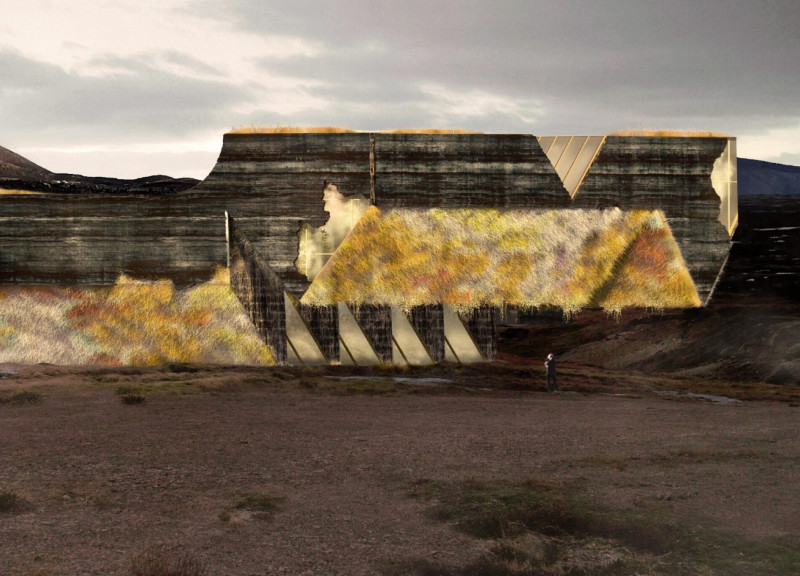5 key facts about this project
The Vogafjós Greenhouse Restaurant is located in Iceland, blending a dining space with an agricultural environment. Its design emphasizes sustainability, making local elements key features in the overall concept. The restaurant challenges traditional dining settings by positioning itself within a natural and productive landscape.
Architectural Form and Spatial Organization
The form of the Vogafjós Restaurant takes inspiration from greenhouses, using shapes that repeat while creating varied spaces. Pitched roofs are arranged in a sawtooth layout, allowing natural light to enter generously, which benefits both guests and plants. This design creates intimate areas for dining, making the experience more engaging and connected to the surrounding gardens.
Connection to the Landscape
On the exterior, the restaurant’s facade frames views of nearby baths and mountains. This connection to the landscape enhances the dining experience. Plants are cultivated under carefully controlled lighting, allowing them to thrive regardless of the weather. This adaptability is a central feature of the design, responding effectively to Iceland's climate.
Materiality and Aesthetic Integration
Rammed earth is used for the facades, giving the building a unique look. The textures and colors echo those found in the local landscape. Turf roofs are another important aspect, providing natural insulation while supporting native grasses and plants. This choice connects the restaurant even more to its environment, reducing its ecological footprint and creating harmony with nature.
User Experience and Interaction
Inside, vertical planters fill the space, creating a lively atmosphere. Guests can choose from private areas or communal tables, fostering different types of interactions. The open kitchen lets diners watch as meals are prepared, making the cooking process part of the experience. This design choice invites a sense of transparency and engagement, enhancing the atmosphere as diners enjoy their meals.
The design culminates in a carefully detailed sawtooth roof that allows sunlight to filter through and nourishes the greenery below, bringing together the elements of architecture, nature, and food.






















































